8 Minuten Lesezeit
One of the most poisonous beauties in the plant kingdom, the “deadly nightshade” (Atropa belladonna) – because the italian word belladonna means “beautiful woman”.
~ Poisonous plant of the year 2020 ~
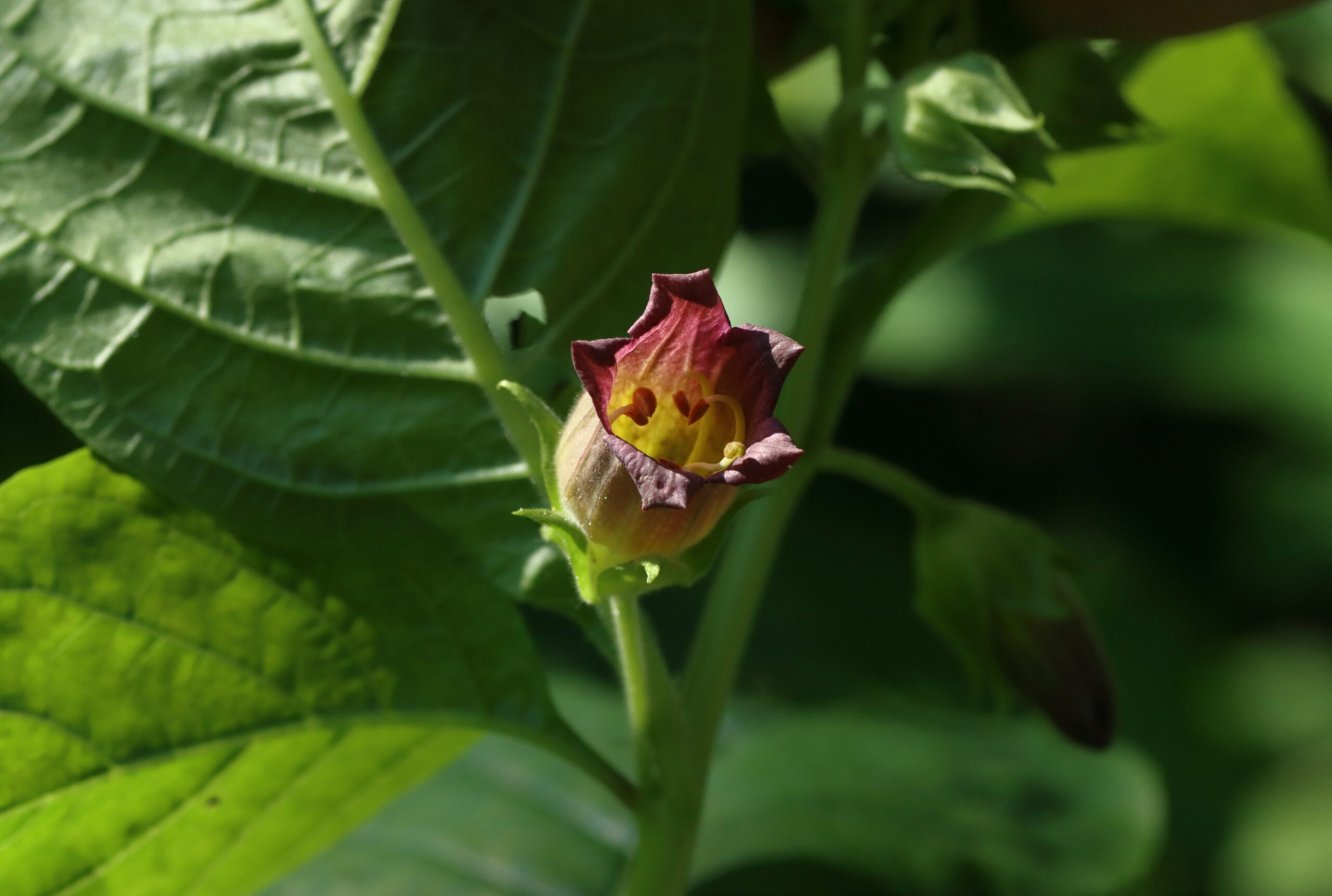
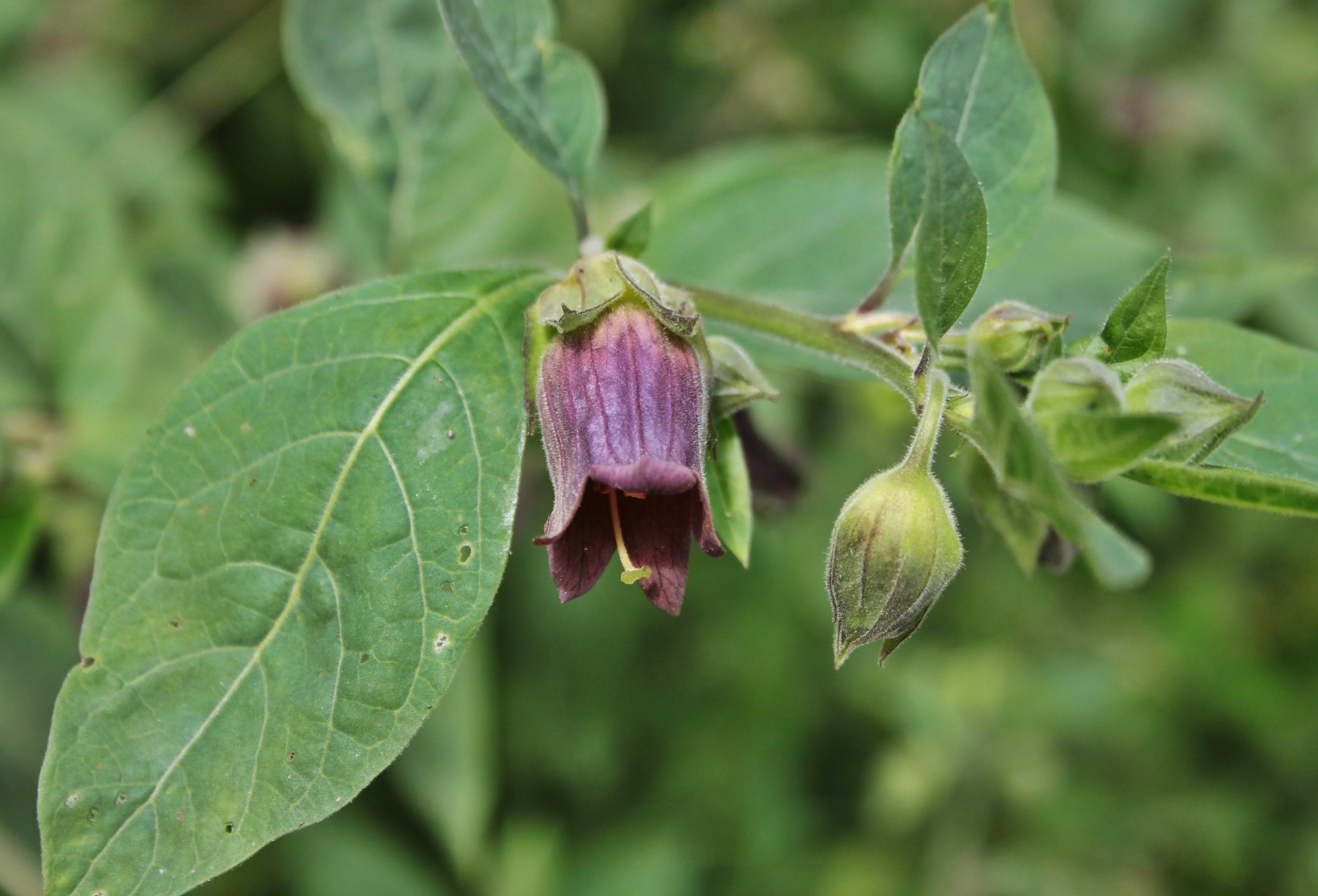
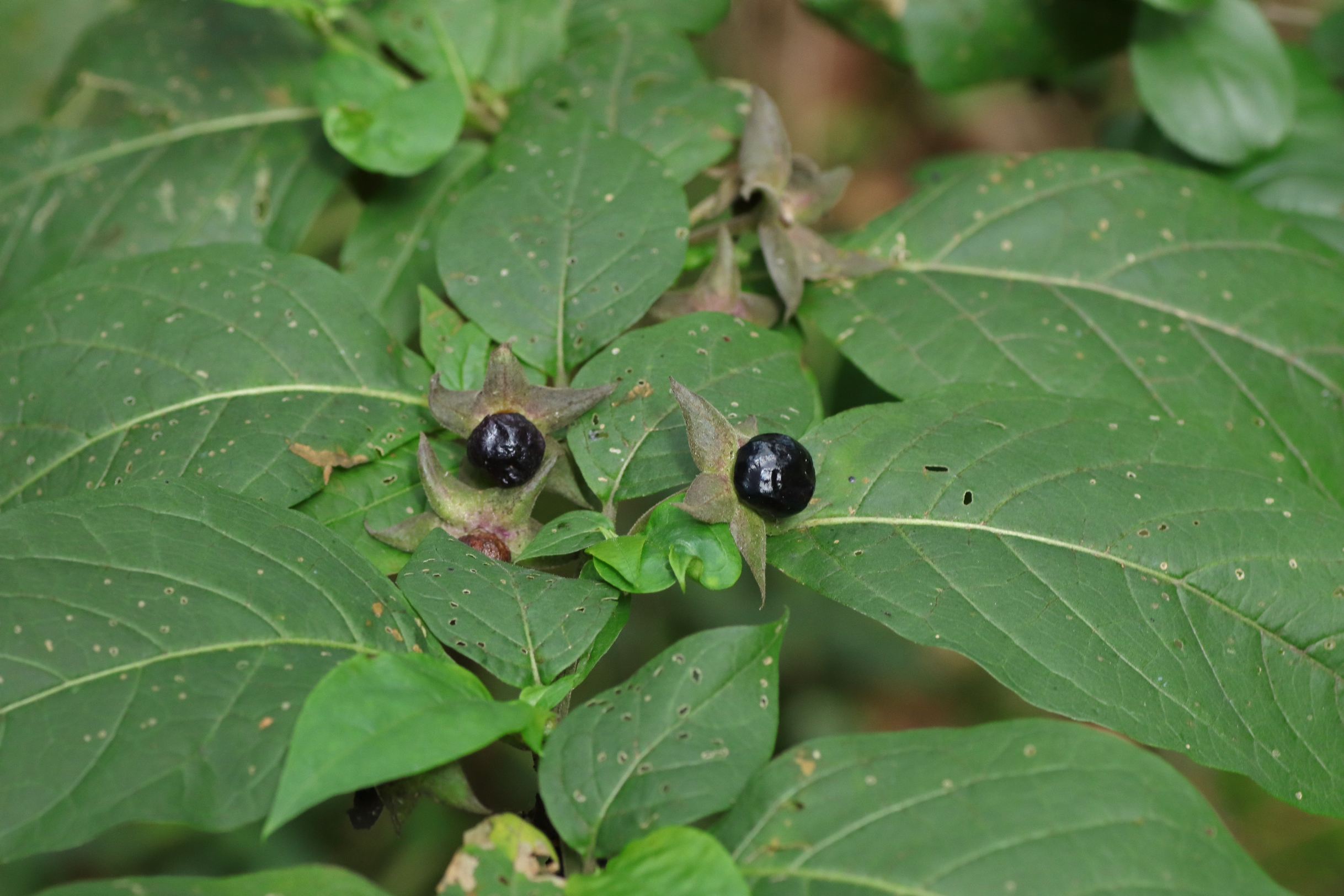
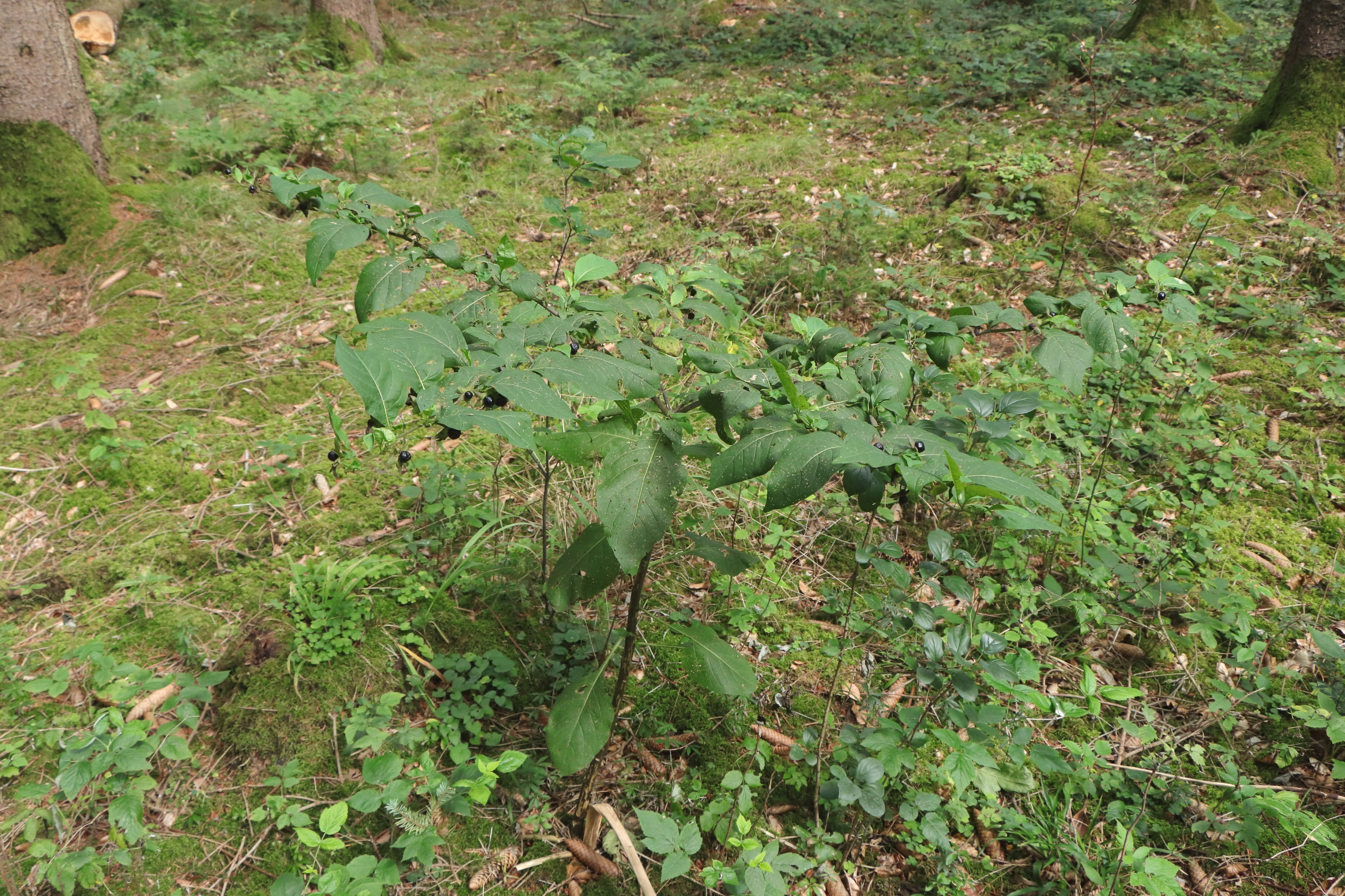
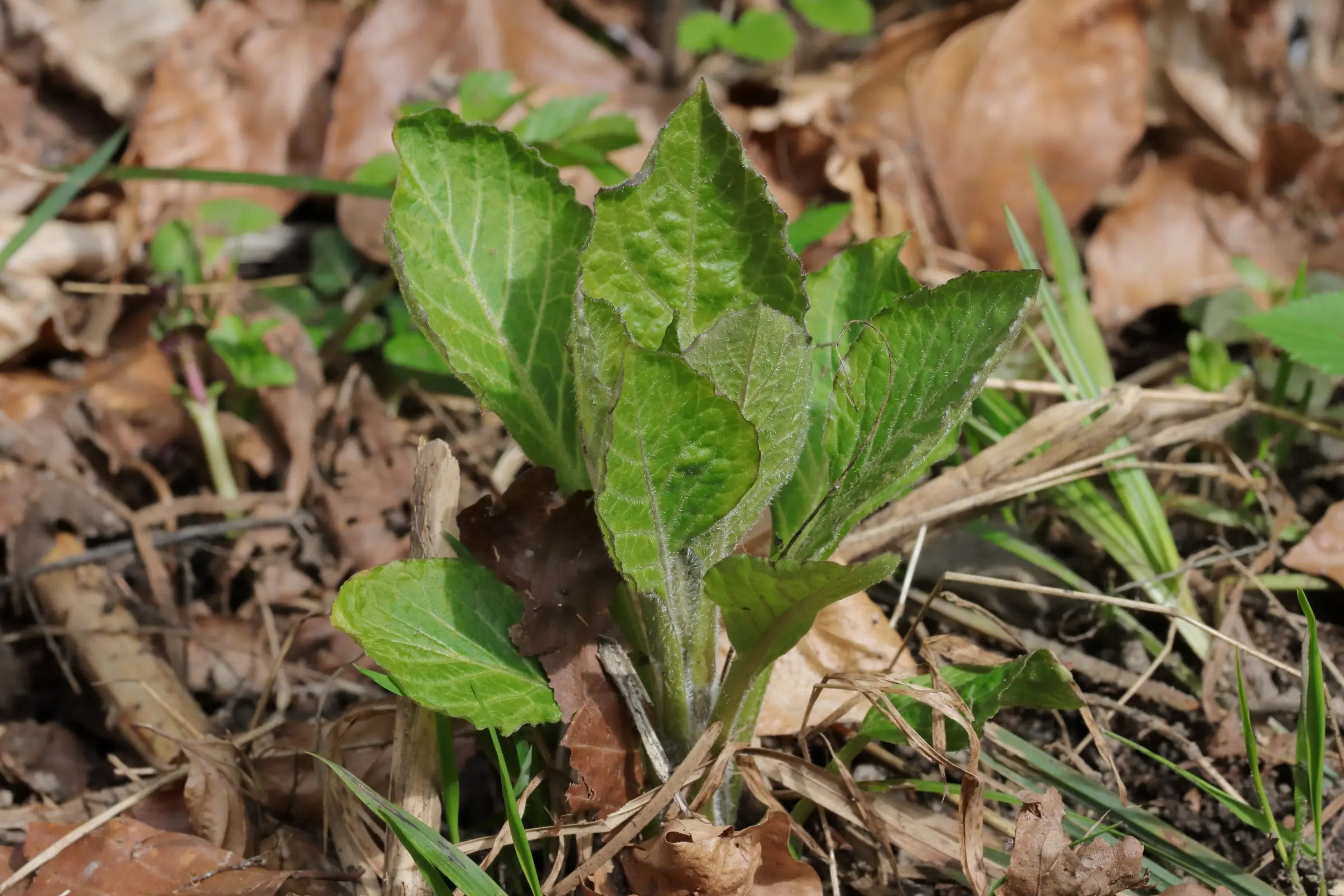
~ Strong poisonous plant ~
Occurrence and distribution: The deadly nightshade grows wild primarily on clear-cuts, forest paths, and partly also forest edges and fields. It is common throughout Europe, Asia and North Africa. It is also partly cultivated in Eastern Europe, China and Russia. In the European mountains it can be found at an altitude of up to 1,700 meters above sea level.
Plant description
Growth habit: The plant has a shrub-like growth habit and reaches a growth height of 50 cm to 150 cm. In rarer cases, growth heights of up to 2 meters are possible. It is very strongly branched. The main stems are often slightly woody. Stems also have a light fluffy surface. The coloration of them can range from green to brownish. The root consists of an arrow-shaped taproot and is very branched on the surface. Taproots of the plant can reach a length of up to 1 meter. The smell of the broken root is very penetrating and unpleasant. The outer shell of the root is slightly yellowish. Inside, the root is white in color.
Leaves: Deadly nightshade has ovate leaves that can grow up to 20 cm long and 10 cm wide. At the tip they converge. All leaves are covered with a multitude of fine hairs. The edge of the leaf is in most cases a complete. Somewhat sunken leaf veins are clearly visible due to their lighter / more rarely whitish coloration. The underside of the leaf is gray-green in color.
Flowers: The flowers have a brown-purple coloration. They consist of 5 petals fused together. The flower reaches a length of up to 3 cm and 2 cm in diameter. The entire flower head is slightly hairy on the outside. Inside the flower it has a light green coloration. The flower stigma has a greenish glow. Around the stigma there are five yellow-colored stamens. The flowering period is from June to August.
Fruit: The unripe fruit has a green color. This turns black due to the anthocyanins contained during ripening. The berries are extremely poisonous! The surface has a slight sheen. The calyx on which the berry sits is spread to form a star.
Poisonous plant – tips on handling
Toxicity of the plant: All parts of the plant are highly toxic. Therefore, they are not suitable for human consumption. The berries have a very high content of toxic substances and they should not be eaten under any circumstance. The remaining parts of the plant should not be touched without gloves and the skin should not come into contact with the sap. Even if the plant parts is dried the plant is still considered poisonous!
Ingredients: In the whole plant, and especially in the berries are various toxins. The very well-known hyoscyamine (is also called atropine) is contained mainly in the berry. These also contain the toxins “scopolamine, apoatropine, belladonnine and scopoletin”. Besides these, the particularly toxic “tropane alkaloids” – L-hyoscyamine – are also present.
Total alkaloid content in the plant parts: Leaves 0.3 – 1 %, roots 0.5 to 1.5 % and seeds 0.8 %.
LD50: In children, a lethal dose is already present with a few berries, in adults from about 10 to 20 berries (depending on the physical condition before ingestion of the berries). About 100 mg of pure atropine or 10 mg of (S)-hyoscyamine is considered the lower limit for a severe poisoning / fatal poisoning. Depending on the composition of the substances in the plant, a mild to severe poisoning may occur. – Source: EMEA
Symptoms of a poisoning with the plant
Symptoms of poisoning: Tropane alkaloids contained in the berries have mainly anticonvulsant effect. Atropine leads to dry mouth, dilated pupils. In a high dose, both poisons lead to a hallucinogenic effect. They have an effect on the central nervous system. This can lead to visual disturbances, sensations of heat and tachycardia. Exitus occurs after a comatose phase due to respiratory or cardiac arrest. Poisoning must be treated within the first hour after ingestion of the poison. In case of poisoning, the antidote “physostigmine” is used.
Use as an antidote
Use as an antidote: It is used in medicine to block the “parasympathetic nervous system”. The atropine interrupts the signal transmission in the nerves. It is used by this effect in poisoning with pesticides (especially insecticides).
Name origin
Name origin: The botanical genus name “Atropa” is derived from the Greek word “ἂτϱοπς” (atropos) – meaning “inevitable”. Thus, the plant has a connection with Greek mythology. In it, one of the three Moirs is called “Atropos” – in English “the inevitable”. She is considered the destroyer of life. Poisoning with the plant – without countermeasures – leads inevitably to death. The botanical species name “belladonna” is borrowed from the Italian word “bella donna” -> see also “folk names”.
Folk names
Folk names: Deadly nightshade is known by various folk names. “buckroot, hellweed, witchberry, murderberry, devil’s berry, wolfberry, belladonna, sleeping cherry, and devil’s cherry”. Some of the folk names are explained in more detail below:
- Belladonna is called, among other things, “wolfberry“. This indicates the toxicity of the plant. Poisoning with the berry leads to a “rabies-like state” in people. For the earlier people brought this in connection with the wolf. In old reference books it is often actually still called “wolfberry”. Evidence for the use of the name also provided the botanist “Marzell” in his book “The animals in German plant names”.
- The Latin name “Belladonna” means “beautiful woman”. For the first time this name was used in the 16th century in Venice. It served as a name for the blood-red makeup made from the berries. As a botanical drawing the word “belladonna” is mentioned for the first time in Matthiolus work: “Commentatii” from 1558.
- Other names are also “sleeping cherry” or “devil cherry / devil berry“. These mainly describe the poisonous effect of the berries. Because the poisons contained lead to a sleep-like coma.
- The old name “Twalm” in English called “Dwale” is derived from the Gothic word dwala. This can be somewhat translated into „insane“.This is because the poisons contained in the plant literally drive people insane.
- In English there is also the most common name “Deadly Nightshade” – This also clearly indicates the toxicity of the plant.
- The name “hell herb” comes from the poisonous effect of the plant.Here, especially poisonous plants were associated with the devil and hell.
Myths and poems
In English folklore there is a rhyme that refers to the symptoms of the plant. This is also often used as a saying:
“Hot as a hare,
Blind as a bat,
Dry as a bone,
Red as a beet,
Mad as a hatter“
Speculations about the plant
Possible use in the preparation of witches’ salves: The following section is difficult to back up with evidence. Therefore, the following explanations should be taken with caution. In the Middle Ages, the plant was considered an important ingredient of the so-called “witches’ salves”.
Together with extracts of other nightshade plants and a variety of other plants, it is said to have led to “flying experiences and hallucinations”. Already in the ancient stories of Lucius Apuleius (around 125 – 180 AD) – “Golden Ass” – evidence of the famous witch ointments can be found. These are said to have helped the witches to “fly”.
Similar “tales” can also be found in other sources. Scientifically, the manufactured salves led to hallucinations when applied to the skin. A proof whether this is actually possible, is not proven certainly. From the arbitrary production and use according to the old “recipes” must be urgently advised against because of the toxicity of individual components.
Endangerment of the plant
Endangerment of the plant: The deadly nightshade is listed as non-threatened on the German Red List.
Distribution-codes: A, AV, M1, M2, F, K